The jewellery industry is experiencing a significant shift as it increasingly integrates technology to enhance its operations. With the adoption of artificial intelligence (AI) and augmented reality (AR) technologies, there is a clear evolution in how the sector approaches design and production. Jewellery brands are using AI to not only predict what’s going to be in demand in the market but also streamline the ideation and design process. In the customer experience space, AR is being used to enhance buyer confidence with interactive features on e-commerce platforms.
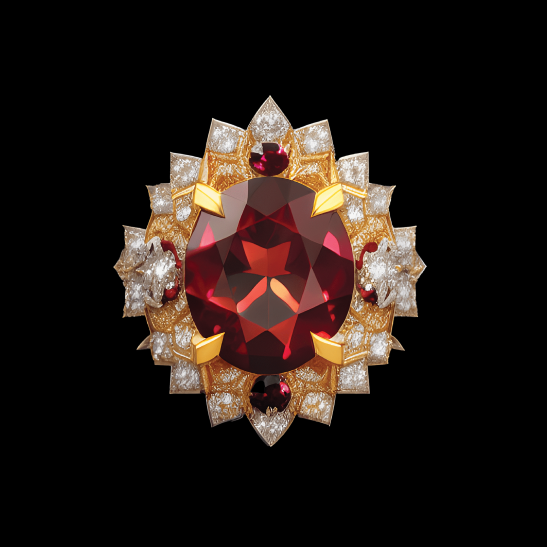 Source: StarryAI
Source: StarryAI
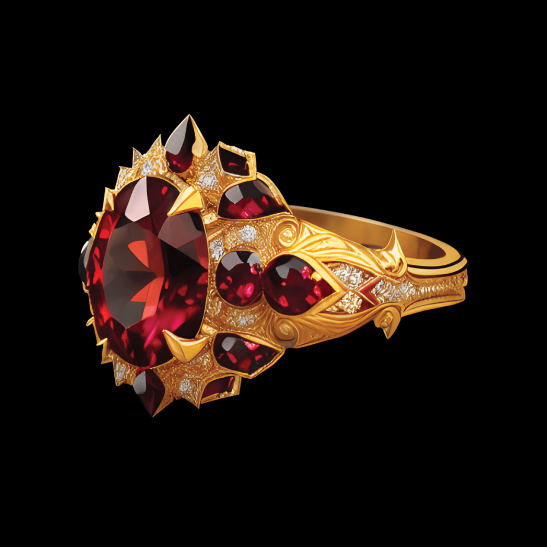 Source: StarryAI
Source: StarryAI
Decoding Data with AI
Where once fashion and jewellery forecasting relied heavily on industry expertise, repetitive research and some human intuition, today’s trend analysts leverage AI to meticulously dissect runways, online activity, and global events and predict consumer preferences. AI-driven predictive analytics has revolutionised the approach to understanding the nuanced dynamics of trend predictions, empowering designers to anticipate rapidly shifting consumer preferences. With AI’s capacity to process extensive datasets and forecast emerging trends with exceptional precision, jewellers now possess unprecedented insights prior to crafting their designs. This partnership of creativity with data-driven intelligence facilitates a more responsive adaptation to evolving consumer tastes, fundamentally reshaping the trajectory of jewellery design. Utilising AI for informed decision-making in jewellery design can ensure that designs are in tune with both current market trends and future demands. This strategic approach enhances the probability of creating successful products that resonate with consumers, thereby increasing revenue potential.
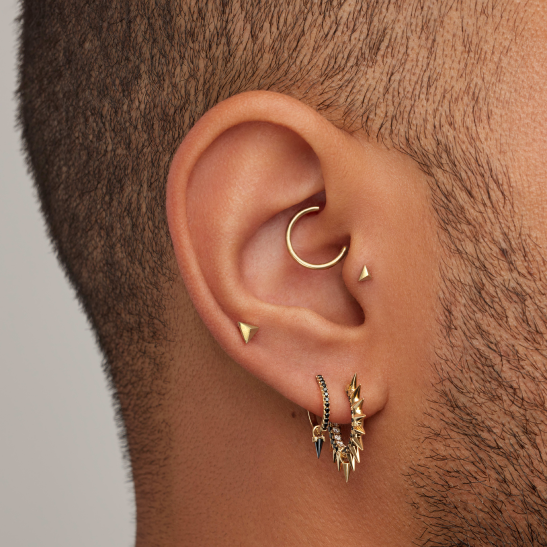 Image provided by Maria Tash
Image provided by Maria Tash
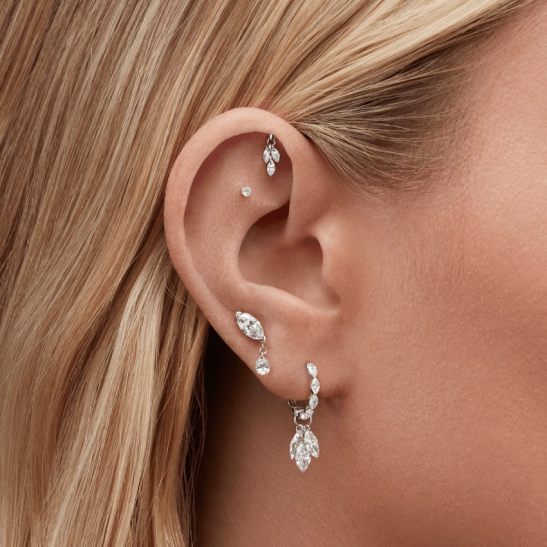 Image provided by Maria Tash
Image provided by Maria Tash
AI-Assisted Jewellery design
Generative AI has significantly transformed the approach jewellers take to designing jewellery, offering a blend of creativity and efficiency. Designers and their teams can now input sketches and desired specifications into platforms driven by AI, which then autonomously produce a diverse range of design iterations. This streamlined process not only expedites design work but also enables designers to explore a wide array of styles and aesthetics. Designers can utilise various AI models such as MidJourney, which facilitates creativity and stimulates visual imagination by converting text or images into design concepts. By integrating generative AI into their workflow, jewellers can push the boundaries of traditional design, resulting in innovative and captivating jewellery pieces that resonate strongly with consumers.
However, using AI during the design process still comes with its challenges. As AI continues to advance in jewellery design, legal uncertainties persist regarding the ownership and intellectual property rights of AI-generated works. With AI models often drawing from diverse data sources, including past collections of designers, determining authorship and ownership becomes complex. Currently, lacking clear legal precedent, these issues are handled on a case-by-case basis, relying on existing intellectual property laws. Until stronger legal frameworks are established, navigating the intellectual property landscape of AI-generated designs remains a challenge, necessitating collaboration between legal experts, industry stakeholders, and technologists to develop robust guidelines that balance innovation with the protection of creators’ rights.
While these advanced technologies are being embraced, many jewellers still value the traditional design process of jewellery making. While advanced tools offer efficiency and precision, traditional methods still hold a unique charm and authenticity that can’t be replicated by AI. These time-honoured techniques involve skilled designers drawing inspiration from the world around them and crafting each piece entirely from their own creativity.
Elevating Consumer Experience with AR
Next to the AI space, the use of augmented reality has significantly enhanced the online shopping experience, particularly on e-commerce platforms, by introducing innovative features such as virtual try-ons and AR technologies. These tools enable customers to visualise how various jewellery pieces will look on them without the need to visit a physical store. Recognising that not every product may suit them when tried on virtually, customers can confidently make purchase decisions with these interactive features.
Early last year, New York-based fine jewellery and luxury piercing brand, Maria Tash, introduced TASH Studio, a groundbreaking virtual tool aimed at providing customers with an interactive styling experience online. The brand’s founder, Maria Tash emphasised how this feature on the website allows to bridge the gap between physical retail locations and online shopping, ensuring global accessibility for clients. She expressed her vision for the software, saying “I wanted to ensure the tool could educate clients on piercing placements, and which jewellery could appropriately go in those locations.”
Leveraging AI to use real piercing principles, the software understands where rings and studs go on the ear and has principles of gravity within the code to ensure realistic perception. “The coding ensures that gravity is accurately represented and involves calculations based on the tightness of the rings and the weights of studs. Clients can add charms to rings and slide the complete unit to different areas of the ear using different gravitational metrics,” Maria says. “The software acts like a three-dimensional stylist and guides a customer to the appropriate piece of jewellery while comfortably at home.”
Since TASH studio was launched, there has been increased time spent on their website, as well as more money on orders when customers have interacted with the jewellery via the software. “The more you can empower a client to visualise their future purchase, at the relaxed leisure at home without the pressure of pushy sales staff, the more it benefits both the clients, retailers, and designers,” Maria says.
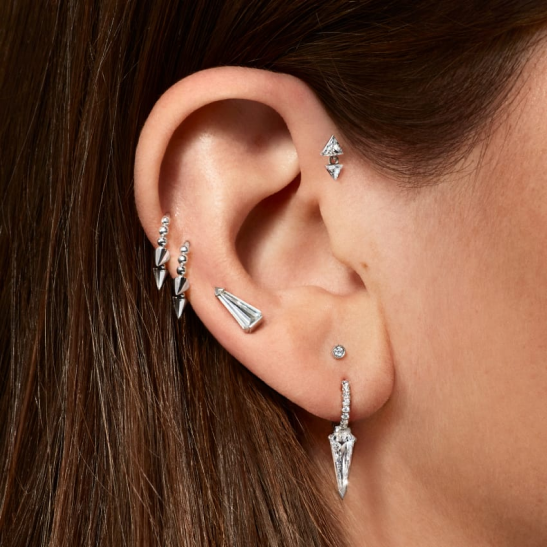 Image provided by Maria Tash
Image provided by Maria Tash
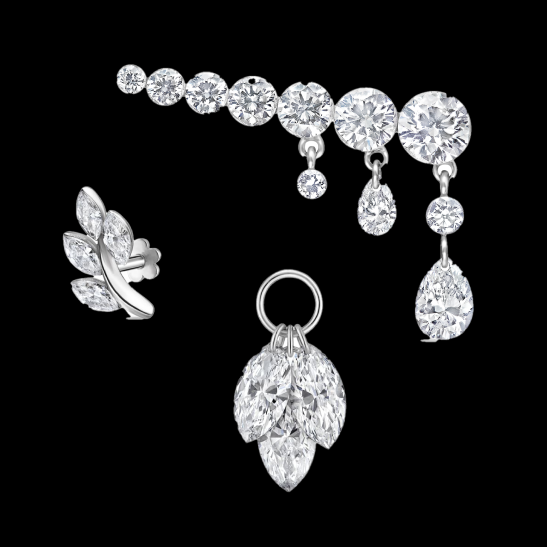 Images provided by Maria Tash
Images provided by Maria Tash
The Learning Curve
Using AI and AR can greatly improve many areas of your business within the jewellery industry, however with such nascent technology, the learning curve can seem overwhelming. Additionally, it is imperative to acknowledge that employees using generative AI may not be fully cognisant of its limitations, potentially overlooking errors introduced by the technology. Businesses seeking to implement AI and AR technologies need to provide resources to educate and train employees, including designers, marketers, customer service representatives and more. Bringing in experts in the AI field to provide specialised training can further facilitate this process. By investing in expertise, businesses can stay ahead of the game, ensuring that they are well-equipped to capitalise on the capabilities of AI and AR technologies and maintain a competitive edge in the market. This strategic approach not only enhances operational efficiency but also fosters innovation and growth within the jewellery industry.
AI and AR are revolutionising the jewellery industry, streamlining operations and fostering creativity. This convergence of technology and creativity marks a transformative era for the sector, where innovative design solutions and enhanced customer experiences are becoming increasingly attainable. However, given the nascent nature of AI and AR, education is crucial to ensure responsible use. Businesses must avoid over-reliance on AI, maintaining a balance with human creativity. While AI excels in data processing, human ingenuity remains vital for innovation and emotional storytelling. Striking this balance is key to navigating the industry’s evolution, maximising its potential while preserving craftsmanship and creativity.


